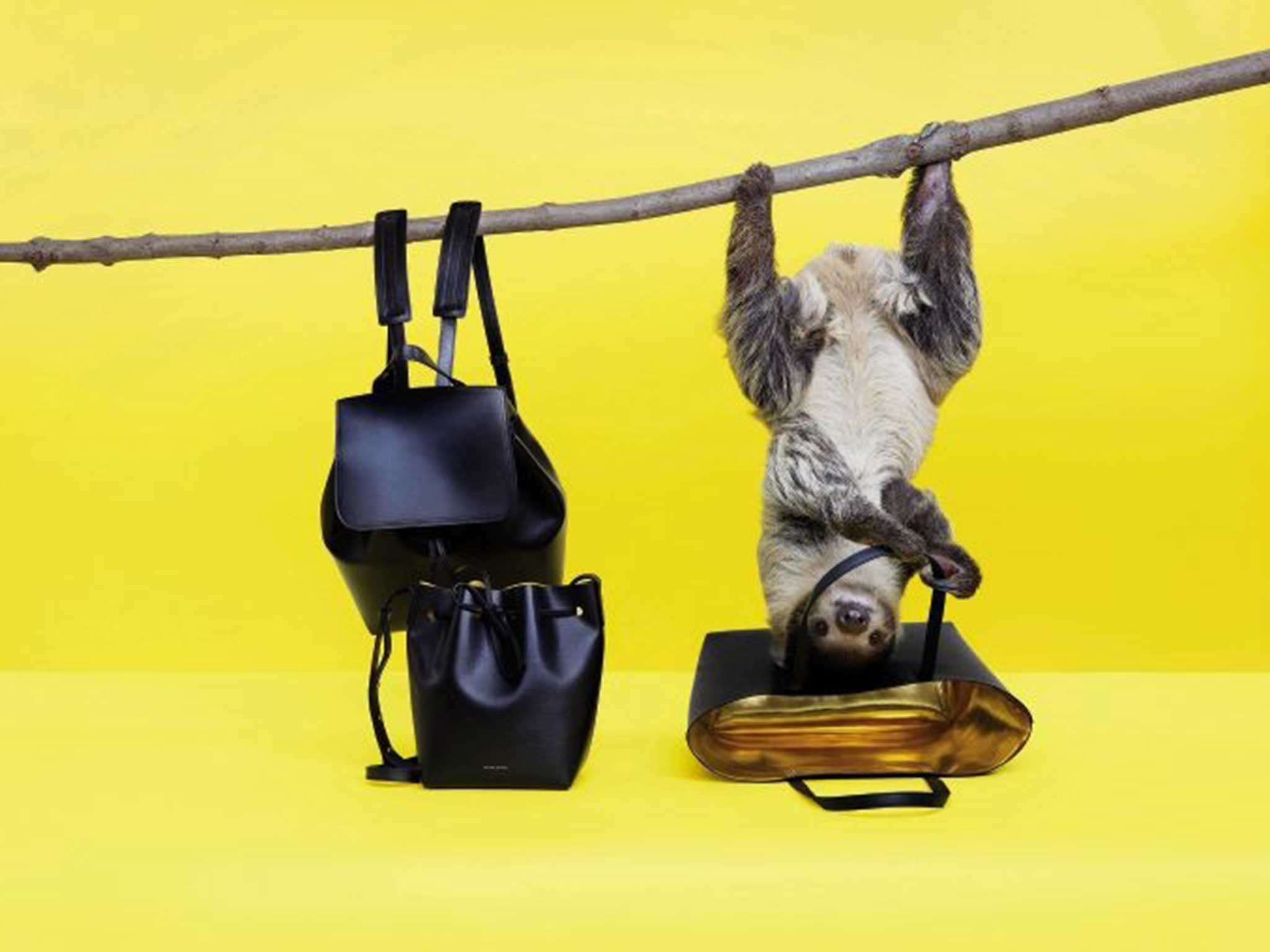The sloth is now the face (and furry body) of three big fashion campaigns
From American Apparel, to designer Mansur Gavriel, the slow and sleepy wins the race for brands in need of a new image

Your support helps us to tell the story
From reproductive rights to climate change to Big Tech, The Independent is on the ground when the story is developing. Whether it's investigating the financials of Elon Musk's pro-Trump PAC or producing our latest documentary, 'The A Word', which shines a light on the American women fighting for reproductive rights, we know how important it is to parse out the facts from the messaging.
At such a critical moment in US history, we need reporters on the ground. Your donation allows us to keep sending journalists to speak to both sides of the story.
The Independent is trusted by Americans across the entire political spectrum. And unlike many other quality news outlets, we choose not to lock Americans out of our reporting and analysis with paywalls. We believe quality journalism should be available to everyone, paid for by those who can afford it.
Your support makes all the difference.It's a classic American Apparel pose: Buttercup lies naked and horizontal, arms splayed and eyes locked with the viewer's. We are told that she loves: "entertaining guests", "posing for photos" and "sunbathing".
Except this time, there's something different. Because Buttercup is no hunk of nubile young flesh with "Hello Boys" eyes. Buttercup is a 23 year-old, three-fingered Bradypus sloth from Costa Rica.
The days of the hypersexual American Apparel adverts are over. Instead of a voyeuristic, DIY aesthetic mining the Lolita fantasy, the urban clothing giant is having a rebrand. Following the ousting of CEO Dov Charney (after accusations of internal sleaze seeped out) and with the firm's share price continuing to plummet (an 80 per cent drop between 2009 and 2014), it has attempted to reinvent its brand with a cut and fluffy sloth. American Apparel is not the only company using the sluggish tree-dwellers of Central and South America in its advertising campaigns.

Mansur Gavriel, the luxury handbag company, used a sloth for its Spring 2015 lookbook, and Sofaworks currently features a TV-loving sloth called Neal who likes nothing better than reclining on his La-Z-Boy and watching telly. Sofaworks customers get a free Neal soft-toy with every purchase – but if you don't need a new three-seater, cuddly sloths are changing (three-fingered) hands on eBay for up to £75, complete with Neal's "Certificate of Slothenticity".
Jodene Rogers, the head of marketing at Sofaworks, explains the rationale: "We chose a sloth because we needed a vehicle to demonstrate how Sofaworks makes customers feel." She adds that Neal has "brought a warmth and likeability" to the brand and "really resonates" with customers.
Using sloths to sell sofas might be new, but animals have long graced our most beloved ads, from Kellogg's Tony the Tiger, who debuted in 1951, to Cadbury's Phil Collins-loving gorilla drummer. It now seems a prerequisite for a Christmas ad to feature an animal – think Monty the Penguin (John Lewis) or the McVitie's choir of tiny creatures slinking out of a biscuit tin.
The reason is simple: it taps into the natural affinity humans have for animals. "They influence our emotions more effectively than almost anything else," says Dr Robert Heath, associate professor of advertising at the University of Bath. It's a concept that was successfully utilised by PG Tips, who used a family of chimpanzees for nearly 50 years – and no less loved are the meerkats of Comparethemarket. When they appeared in 2009 they saved the company, which was struggling to stand out in a field saturated by price-comparison websites.
The success of the ads, led by the dressing-gown-clad meerkat Aleksandr Orlov, was staggering. Its market share jumped by 76 per cent, mirroring the boost enjoyed by PG Tips, which dominated the tea market after its first chimp ad, in 1958. CGI has since revolutionised the industry. "The PG chimps were real animals. CGI has made things cost efficient," says Michael Barnett, features editor of Marketing Week. "You don't have to pay actors or deal with the animals doing something wrong."

But compared with how strikingly original tea-drinking monkeys must have seemed when they first appeared, the use of the sloth already feels a bit tired: they have been fixtures on the web for more than a decade. Among the net miscellany there are Tumblrs called things such as Sloth-It-Like-Its-Hot, remixed YouTube videos (most famously featuring a street-bound sloth "taking off" to the tune of R Kelly's "I Believe I Can Fly") and a Photoshop meme called Sloth-Facing which allows you to distort your face to look more – you guessed it – sloth-like.
Still, Dr Heath believes it's an odd choice for any company. "When you use an animal, it reflects the personality of your company," he says, name-checking the soft Andrex puppy and the reliable Dulux dog as examples. "But sloths are lazy and slow. That's a strange message to send to consumers." Michael Barnett is similarly unimpressed: "It's like they've seen something which works online and are trying to replicate that."
But can a warm and fuzzy emotional response to sloths eradicate American Apparel's stench of sleaze? Most definitely, argues psychologist Felix Economakis. "The aim is to make associations between the product and nice feelings," he says. "In short, people are fickle. They'll forget about the claims that American Apparel were unethical and just focus on the cute sloth.
Join our commenting forum
Join thought-provoking conversations, follow other Independent readers and see their replies
Comments